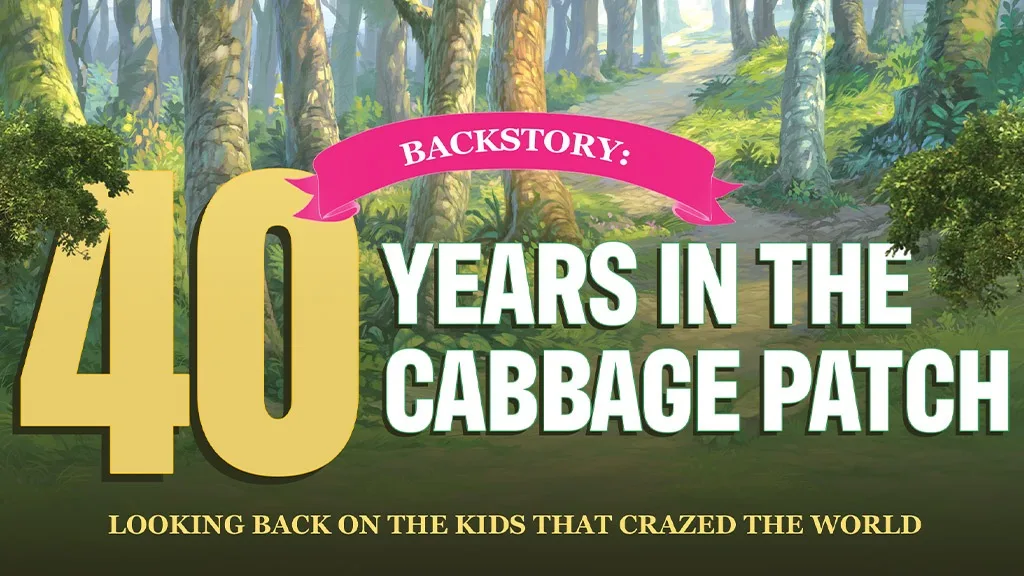Where do babies come from? Maybe you’ve heard the old wives’ tale that they hail from the cabbage patch — and we’re here to confirm that it’s true, at least if you’re talking about Cabbage Patch Kids.
The iconic dolls have marked so many firsts for the toy industry over the past 40 years, including blasting into outer space in 1985, repping the U.S. as the first official mascot of the Olympic team in 1992, and going postal with an appearance on stamps in 2000. Before they were the adorable Cabbage Patch Kids, they were known as Little People.
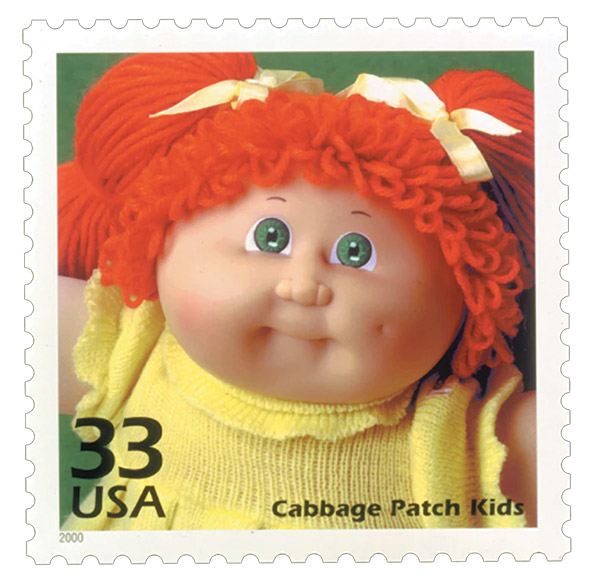
Xavier Roberts started creating soft sculptures in 1976 and selling his Little People Originals in 1978, influenced by the designs of art student Martha Nelson. That same year, he incorporated the company Original Appalachian Artworks (OAA) and opened BabyLand General Hospital to the public, a renovated medical facility in Cleveland, Georgia, where kids could adopt the handmade baby dolls.
In 2018, BabyLand celebrated four decades of adoptions, and this year, the Cabbage Patch Kids brand celebrates its 40th anniversary. Although the experiential destination of BabyLand was an innovation in its own right, Cabbage Patch Kids may never have skyrocketed the way they did without Roger Schlaifer, the man behind the branding and the worldwide licensing program that made Cabbage Patch Kids such a powerhouse in the ‘80s.
THE BRAND. THE MYTH. THE LEGEND.
Branding makes a product memorable by shaping customer recognition and distinguishing it from the competition. The first order of business was changing the name to establish a strong identity. Fisher-Price owned the Little People name, so that wasn’t something OAA could license. Schlaifer thought up two new options.
“One was Adorable Adoptables, which would’ve been fine if it was just a doll line,” Schlaifer says. “But since I wanted a story background and to be able to develop the publishing and entertainment, that’s why we went with Cabbage Patch Kids. I wanted it to be an evergreen brand. If you have that huge franchise, make it last forever with brand awareness. If you do it right, it would be sensational.”
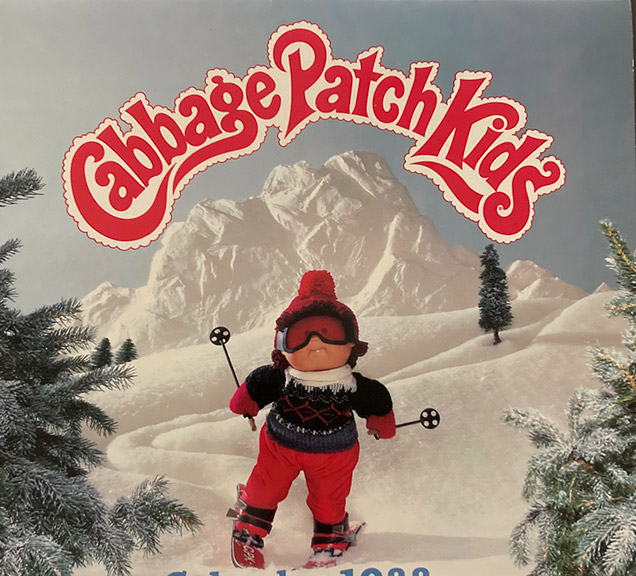
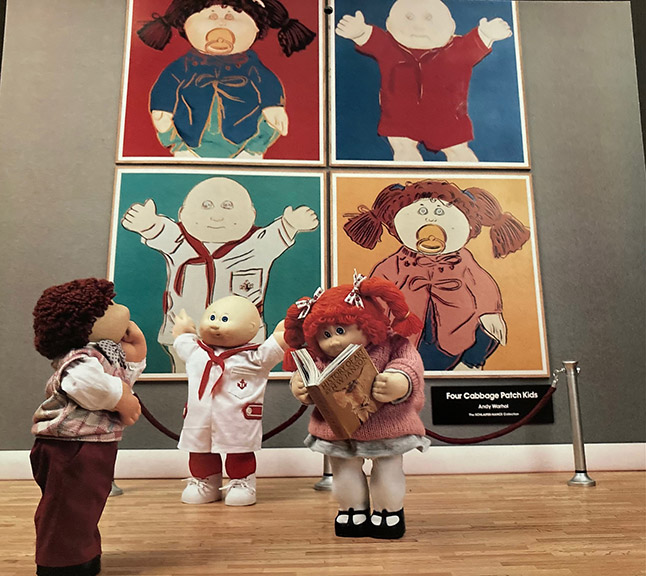
Creating a backstory makes a brand even more powerful and Schlaifer coauthored the legend of the Cabbage Patch Kids with his wife, dreaming up bunnybees that sprinkle magic crystal dust of all sizes and colors on the mother cabbages, causing the Cabbage Patch Kids to grow. In theory, all the Cabbage Patch Kids and Babies can live and play in BabyLand until someone adopts them and takes them home.
Giving the Kids double names, like Adelaide Rose and Henrietta Beatrix, gave them more of a southern identity since BabyLand and OAA dug their roots in Georgia. “There wasn’t much media at the time that captured a southern rural atmosphere, which I thought would be a big part of making it distinctive,” Schlaifer says.
BabyLand remains open today, modeled after a southern-style home surrounded by seasonal gardens and trees with rocking chairs on the covered porch. “Xavier Roberts made BabyLand General an environment to cultivate his Appalachian brand of southern hospitality — a culture of kindness,” says Margaret Hata McLean, BabyLand’s Director of Corporate Communications. “The entrepreneur built a larger home where ‘family’ could always come and visit.”
LOCKING IN COLECO
Cabbage Patch Kids has changed hands many times over the past 40 years, making the rounds through Coleco, Hasbro, Mattel, Toys “R” Us, Play Along Toys, JAKKS Pacific, Wicked Cool Toys, and Jazwares, but it was a harrowing journey to find the brand a home at first. After Schlaifer acquired the licensing rights in 1982, he set out on a mission to lock in a toy company so that he could also sign licensees for apparel, bedding, and more.
The head of marketing at a major toy company that shall remain nameless even held one of the Cabbage Patch Kids hostage, complete with a ransom note with words cut out of a magazine demanding a royalty-free license. “They sent me a Polaroid picture of Pauline Xandra tied to a chair with a knife at her throat saying, ‘Time is running out for Pauline Xandra,’” Schlaifer says.
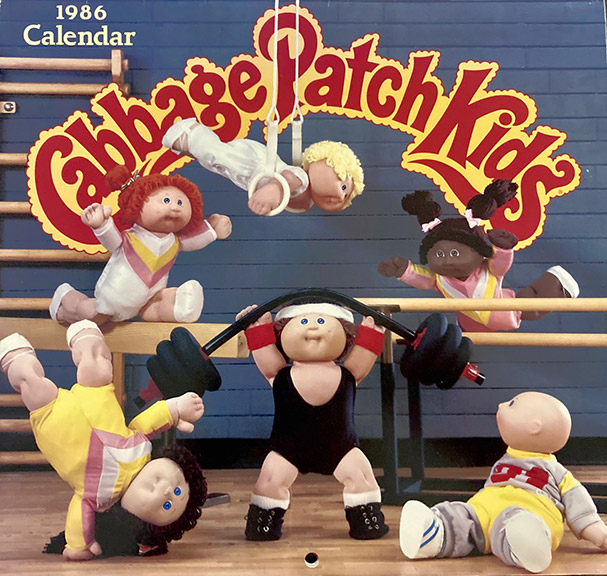
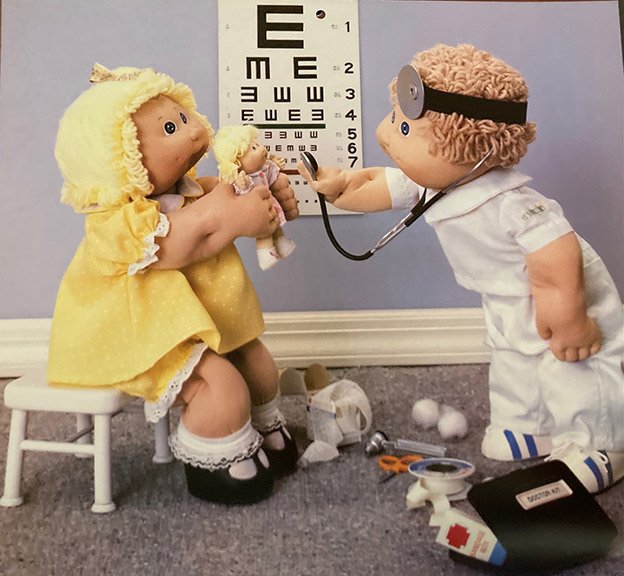
It took a while for people to come around to the look of the early handmade dolls, including the head of CBS children’s programming when Schlaifer met with him in 1982. “He said, ‘That’s the ugliest thing I’ve ever seen and adopting them will scar kids for life. We’re not interested,’” Schlaifer recalls. “When no manufacturers were interested, especially because I was out on a limb financially, it was like, my god, how could they not see this as the most unique looking doll ever?”
After much rejection, Coleco came around and Cabbage Patch Kids were a hit, with around 3 million adopted by the end of 1983. By the time the holiday season rolled around, customers were rioting as they stampeded stores to get their hands on the coveted dolls, setting the stage for future toy crazes. The brand also saw success with children’s apparel, diapers, bedding, calendars, jewelry, ear muffs, and more.
Cabbage Patch Kids embraced inclusivity from the beginning, featuring a matrix of different skin tones, hair colors, eye colors, and outfits to represent a wider range of kids than many other doll lines at the time. “Xavier’s whole schtick was that he wasn’t selling dolls, he wasn’t selling toys — that they were works of art,” Schlaifer says.
CPK HEADS TO RETAIL
Cabbage Patch Kids hit its 10th anniversary as part of the Hasbro portfolio and then evolved to feature vinyl bodies in addition to the cloth options after Mattel acquired the license in 1994. Even when Cabbage Patch Kids went to mass market and expanded with new collections, the essence of the brand remained.
“I really think that their advertising hook to adopt the Kids, and how no two were alike, is what grabbed people,” says Stefanie Eskander, who worked as a designer for the Large and Small Dolls Group at Mattel in the mid-’90s. “Each Cabbage Patch Kid was slightly different and you knew that there was never going to be another one just like yours. You adopted them and they had their little birth certificate. That was just something magical.”
Suzanne Mills-Winkler worked with Eskander as the Director of Large Dolls at Mattel when the CPK license was there, also later working at Toys “R” Us, Play Along Toys, JAKKS Pacific, and Wicked Cool Toys. She also worked on Cabbage Patch Kids as her own vendor through the years. “In the ‘80s, dolls were more cookie-cutter: They had to be beautiful and they had to have a certain look,” Mills-Winkler says. “These Cabbage Patch Kids came in and they’re funky, they have kind of a crazy face.”
When Mills-Winkler’s Mattel team worked on new face sculpts, they took inspiration from real baby photos. “If you look at a newborn baby’s face, they’re round with chubby cheeks and Cabbage Patch took a lot of essence of that baby cuteness,” she says. “They’re not beautiful, but they’re cute. I think that it really touched a chord with kids.”
Mattel launched tons of new Cabbage Patch Kids collections, including the Olympikids line for the 1996 Olympics that took place in Atlanta, the Playtime Friends collection that featured Cabbage Patch Kids with leg braces, the Brushin’ Teeth Baby that had a foaming toothbrush and toothpaste feature, and more.
“Everybody has always really wanted to re-create the magic that happened in the ‘80s, which was what we’d call a ‘viral moment’ nowadays, but it’s not something that can always be created,” Mills-Winkler says. “That was an amazing phenomenon: to have a product that has that much awareness, every manufacturer can do their part to make it new and fresh for the consumer while staying true to the product.”
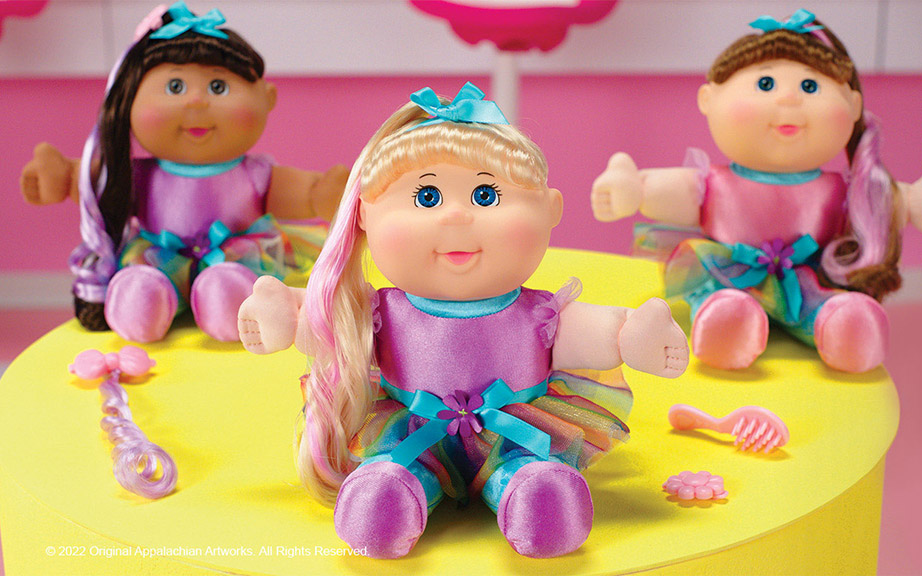
For Cabbage Patch Kids’ 35th anniversary, Wicked Cool Toys released 16-inch Vintage Kids featuring retro-style outfits and the original yarn hairstyles. Some of Jazwares’ most recent Cabbage Patch Kids include the 11-inch Style N’ Play Toddler with hair that really “grows,” the 9-inch Splash N’ Float Tiny Newborn that comes with an inflatable float, and the 3-inch Cutietown Figures.
STITCHED WITH LOVE
BabyLand General still offers its own Cabbage Patch Kids created by local designers, giving fans something special that calls back to the brand’s humble beginnings. When guests visit the destination, they are encouraged to play with the Cabbage Patch Kids located throughout the nurseries and they can even pick a one-of-a-kind Cabbage Patch Kid straight from a cabbage to adopt and take home. There are 17- and 20-inch Babies and Kids with vinyl heads and soft sculpted bodies for $79.99-89.99, or soft sculpture Classic Little People and Cabbage Patch Kids with adoption fees that begin at $260.
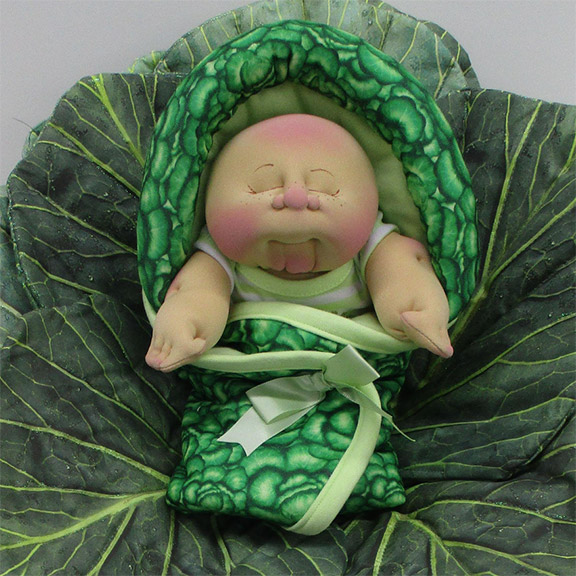
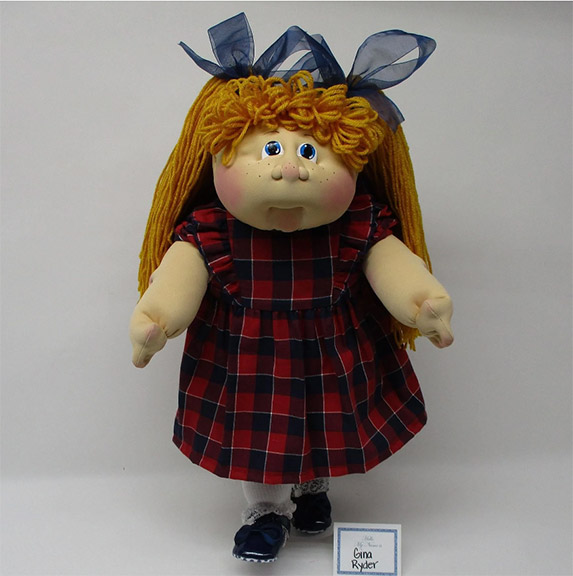
“You have to take time to understand there will never be another baby made that is exactly like the work of art you are hugging,” says BabyLand’s Hata McLean. “Our babies are unique, not perfect. They offer love without conditions. Is that a grin, gas, or a smile? Creativity and imagination come alive with every stitch.”
It’s been quite the journey since those mystical bunnybees pollinated their first cabbages, but one thing remains constant after all these years: Cabbage Patch Kids continue growing in the garden of American culture — and they’re not stopping anytime soon.
A version of this article was originally published in the 2023 edition of The BIG Toy Book. Click here to read the full issue! Want to receive The Toy Book in print? Click here for subscription options!

